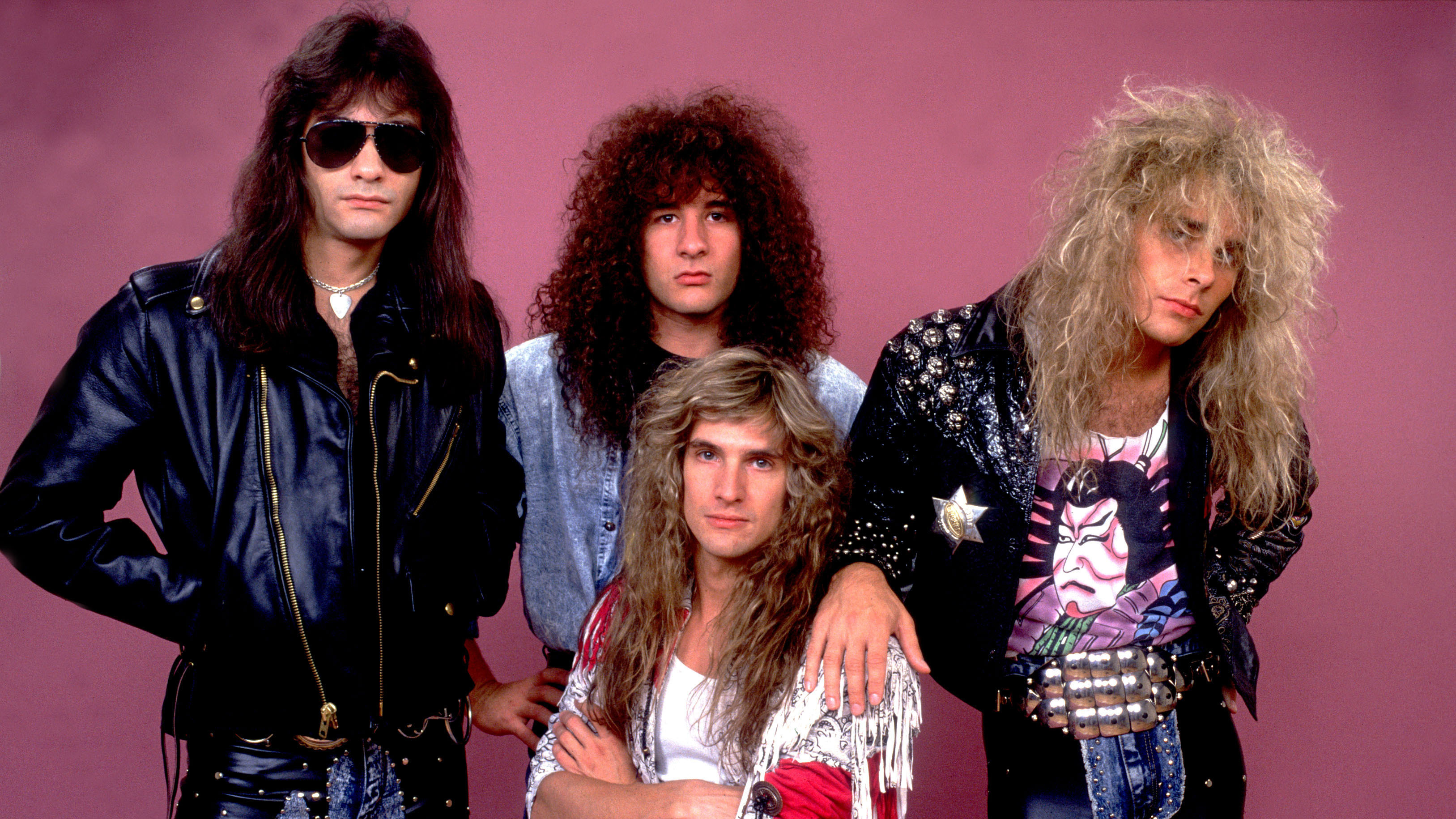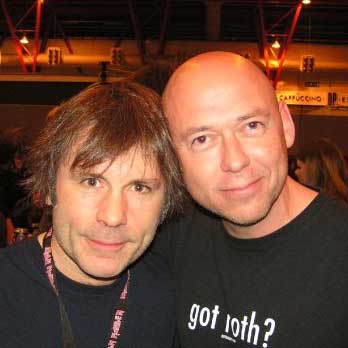“In the ’80s, MTV buttered our bread. But after Kurt Cobain wore his grandfather’s sweater in the video for Smells Like Teen Spirit, there was no place on MTV for bands like us and Mötley Crüe”: The life and death of the thinking person’s hair metal band
Two top 10 hits and two million album sales couldn't save them

In the summer of 1988, New York-based rock band White Lion were flying high.
Their second album, Pride, had sold a million copies, and they were on a huge US tour opening for AC/DC.
Fronted by Danish singer Mike Tramp, White Lion had been on the road for a whirlwind 10 months.
They had also opened for Kiss — whose bassist/vocalist Gene Simmons had told Tramp he had “the coolest name in rock ’n’ roll” — and then Aerosmith, whose singer Steven Tyler would greet Tramp each night by singing White Lion’s breakthrough hit Wait.
Wait reached No.8 on the US chart and was followed by an even bigger hit.
When The Children Cry — a gentle acoustic song with a pacifist message — went all the way to No.3.
As Tramp would recall in an interview with Classic Rock: “The rise of White Lion was like climbing a ladder with a rocket up your ass!”
Want all the hottest music and gear news, reviews, deals, features and more, direct to your inbox? Sign up here.
But as it turned out, the band’s decline was equally swift.
The death of White Lion was the result of various factors — bad decisions, record company politics and the onset of grunge, the biggest revolution in rock music since punk.
But what ultimately destroyed White Lion was the very thing that made them great — the strange relationship between Mike Tramp and the band’s extravagantly gifted guitarist, Vito Bratta.
As Tramp said: “Vito and I had no connection whatsoever except through music. It’s sad, but true.”
Mike Tramp and Vito Bratta first met in New York City in 1982, when Bratta’s group Dreamer were headlining a show at the famous rock club L’Amour in Brooklyn, supported by Tramp’s band Lion, who had recently relocated to New York from their native Denmark.
Backstage that night, Tramp was amazed when he watched Bratta warming up by playing a note perfect version of Eddie Van Halen’s guitar showpiece Eruption. “My jaw just dropped,” Tramp said.
By then, Tramp, at 21, was already a veteran of the music business. He made his recording debut at 13 when he and his elder brother, billed as Dennis & Michael, cut a single for EMI.
At 15, Mike joined Danish teenybopper act Mabel after seeing them open for The Bay City Rollers in Copenhagen. Mabel represented Denmark in the Eurovision Song Contest in 1978 with the song Boom Boom (they finished 16th out of 20 entries, with just 13 points).
Later, Tramp restyled Mabel as a hard rock band with a new and suitably macho name: Studs. The name was changed to Lion when the band moved to New York.
They lasted just six months until they ran out of money and returned to Denmark shortly after that gig with Vito Bratta’s band Dreamer.
But Tramp had the determination and the air fare — borrowed from his mother — to get back to New York. In early 1983, he and Bratta began writing songs and finding musicians for a new version of Lion, soon to be renamed.
“There was a band in New York called White Tiger,” Tramp recalled, “so Vito said: ‘Why don’t we call ourselves White Lion?’ I wanted something more original, but White Lion just stuck.”
With a solid line-up — featuring drummer Nicki Capozzi and bassist Felix Robinson, the latter formerly of pomp rock cult heroes Angel — the newly christened White Lion cut a debut album with German producer Peter Hauke.
The album was titled Fight To Survive, and featured the very first song that Tramp and Bratta wrote together — a brilliant melodic hard rock anthem called Broken Heart.
On the strength of that album, White Lion promptly signed to major label Elektra. But the band’s euphoria was short-lived.
As Tramp explained: “Two months after we signed to Elektra, our management told us: ‘We got good news and we got bad news. The bad news is: Elektra has dropped you. The good news is: we get to keep the money.’ We were devastated.”
Tramp believed that Elektra had a change of heart about White Lion because the label already had two successful hard rock acts in Mötley Crüe and Dokken.
Fight To Survive was eventually released in 1985 by the Victor label in Japan, followed by a US release via tiny independent Grand Slamm.
The band was strengthened by the acquisition of a new drummer, Greg D’Angelo, and a new bassist, James LoMenzo. But still no major labels were interested in White Lion.
The new-look band earned a little extra cash with an appearance in hit movie The Money Pit, produced by Steven Spielberg and starring Tom Hanks.
When a second album was recorded in 1986, again with Peter Hauke producing, the results were underwhelming. But just when it seemed that White Lion would never catch a break, a saviour appeared in the shape of another German producer, Michael Wagener.
An expat based in California, Wagener was enjoying a hot streak during the mid-’80s as producer and mixer of hit albums for Mötley Crüe, Metallica, Dokken and German band Accept, for whom he’d played guitar in his teens.
As Tramp recalled: “Somehow, Michael Wagener heard this unreleased White Lion music, and instantly he called our management and said he wanted to re-record the album in California.”
At the same time, the band found another supporter in Jason Flom, an A&R man for Atlantic Records.
In early 1987, White Lion decamped to LA to remake the album with Wagener.
“Michael was great for us,” Tramp said. “He just let the band be the band, and he knew exactly what we wanted – something like the first Van Halen album or Journey’s Escape, but in our own style.”
The album was named Pride, and it captured what Tramp calls “the 100 per cent purity of White Lion”.
When the album was released in June 1987, Kerrang! declared it a classic.
Pride would eventually sell over two million copies, and for Tramp the success of When The Children Cry was especially important.
“It wasn’t Every Rose Has Its Thorn by Poison,” he said. “This was the era of Ronald Reagan, and I was singing: ‘No more presidents, and all the wars will end…’ That was pretty gutsy.”
This song was also influenced by events in Tramp’s childhood. “I was around five or six when my father left us,” he explained. “My mom was left with three boys. So without a doubt my own story is in that song.”
When The Children Cry proved that White Lion were that most unlikely of things – the thinking person’s hair metal band.
“I had a pretty loud image that went against me in many ways,” Tramp said. “As much as White Lion were affiliated with that hair metal scene, we found it very embarrassing to see women being degraded. I never wanted to engage in alcohol and drugs and that kind of lifestyle.”
What Tramp did become was a very rich man. He revealed: “At the end of the Pride tour in 1989, Vito and I, as the songwriters, were at that point of passing a million dollars each.”
But even then, at the height of White Lion’s success, Tramp and Bratta were already drifting apart.
The band recorded their third album, Big Game, with Michael Wagener at Amigo Studios in Hollywood, where they had cut Pride. But as Tramp admitted: “Outside of the studio, Vito and I were not spending any time together.”
Picking up where he left off with When The Children Cry, Tramp explored socio-political themes in new songs such as Little Fighter and Cry For Freedom.
But if the reaction from key players at Atlantic Records was positive, Tramp later discovered that he was being misled.
“We played Cry For Freedom to Jason Flom and [Atlantic president] Doug Morris and they were comparing it to Led Zeppelin,” Tramp said. “But many years later, we found out that Doug Morris had said to Jason Flom: ‘Why are you letting them do this?’”
During the recording of Big Game, White Lion were also working to a tight deadline: a tour with Ozzy Osbourne had already been booked, with a juicy fee of $25,000 a night.
Big Game was released in June 1989 when Tramp felt it “unfinished”. The album shipped gold on its release, selling 500,000 copies. But after this strong start, sales quickly dropped off as the album’s four singles all bombed.
“The record company didn’t know what to do,” Tramp said. “And we never had a discussion about it, because there wasn’t much we could change.”
White Lion mustered one more album, Mane Attraction. But by the time it was released in 1991, alternative rock was in the ascendancy.
“The major impact came when MTV changed its concept,” Tramp says. “In the ’80s, MTV buttered our bread, but after Kurt Cobain wore his grandfather’s sweater in the video for Smells Like Teen Spirit, there was no place on MTV for bands like White Lion and Mötley Crüe.”
A long-running dispute over money led to James LoMenzo and Greg D’Angelo quitting the band.
“The money was split 25 per cent equally on live performance, but also 25 per cent equal on expenses,” Tramp explained. “So Vito and I, as the songwriters, were making all the money. James and Greg weren’t asking for a lot, but the split happened.”
With new bassist Tommy ‘T-Bone’ Caradonna and drummer Jimmy DeGrasso, White Lion embarked on a 16-date club tour in the US. But when the tour reached New York, the band’s hometown, Tramp discovered that Atlantic Records had given up on White Lion.
“Nobody from the record company showed up at the gig,” he says. “I knew the song: there’s a new kid in town.”
The final date of the tour was in Boston. Tramp took Bratta aside and told him: “This is our last show.” Bratta offered a one word reply: “Okay.”
“We never, ever talked about why it was so easy to break up the band,” Tramp said. “And the phone call never came from the record company or the managers or the merchandising company that had once given us a million dollars in advance.
“We had a great band. We had two songwriters that knew how to work together. But nobody fought for White Lion.”
In the years since White Lion broke up, Bratta’s public profile has been virtually nonexistent, while Tramp has toured and recorded as a solo artist and with the bands Freak Of Nature and Mike Tramp And The Rock’N’Roll Circuz.
The singer continues to tour in 2025 billed as Mike Tramp’s White Lion.
As he told Classic Rock: “I’m proud of what Vito and I did with White Lion. And for that, I still love him.”

Paul Elliott has worked for leading music titles since 1985, including Sounds, Kerrang!, MOJO and Q. He is the author of several books including the first biography of Guns N’ Roses and the autobiography of bodyguard-to-the-stars Danny Francis. He has written liner notes for classic album reissues by artists such as Def Leppard, Thin Lizzy and Kiss. He lives in Bath - of which David Coverdale recently said: “How very Roman of you!”
You must confirm your public display name before commenting
Please logout and then login again, you will then be prompted to enter your display name.
